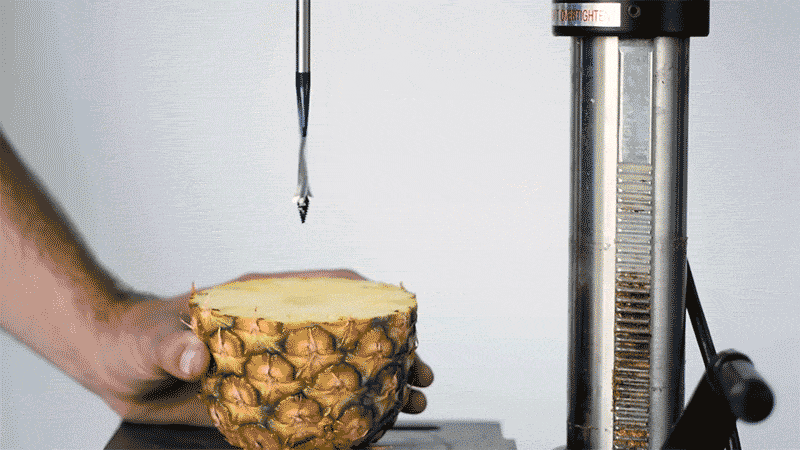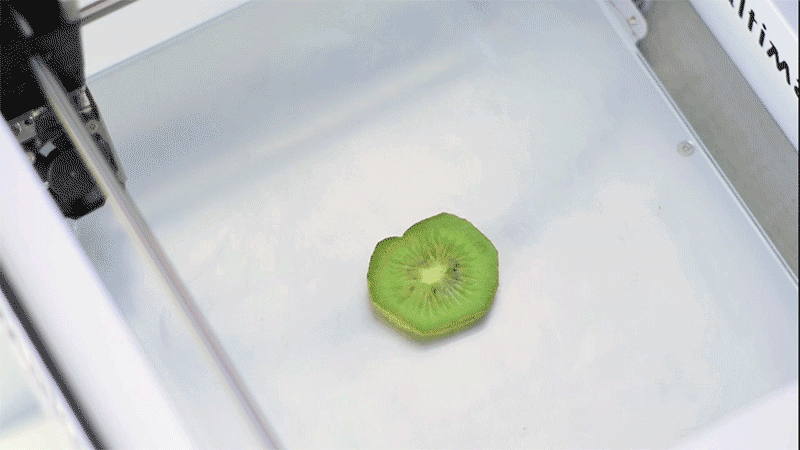Food For Thought
August 14th, 2017
8 min read

It’s important that we use the tools available to us to do interesting new things with our food.
Introduction
Over the last few years we’ve seen a change in the food retail landscape, with big-box retailers like Walmart and Kroger introducing organic, healthy options to compete with the success of Whole Foods. A few weeks ago, Whole Foods was acquired by Amazon, provoking some fantastic thoughts around how food distribution is changing.
I’ve been interested in mass-market food production and consumption for years, and I was even lucky enough to be involved when Woke worked with Amazon Fresh on a part of their Pickup service. It’s clear that food is going to change in a big way, but what will drive those changes? What causes people to make the choices they make when they’re tired and hungry? What do people actually want from their food?
What do we actually want from our food?
So what drives our actual choices of what to eat on a daily basis? After doing some research, here’s what I found:
Nutritious
At its most basic, food needs to sustain us. In the short term, food needs to provide enough calories to fuel our daily activity. In the medium term, food provide the nutrients we need to keep our bodies in good working order. In the long term, good food guards against disease and helps us to live longer and healthier lives. We have many nutritious foods, but they are not always readily available or desirable to us.
Delicious
Food needs to be desirable! Any food that isn’t tasty is unlikely to succeed. The basics of deliciousness can be as simple as the good old salt-n-fat combo, or as advanced as the complex flavours and textures of haute cuisine. We’re almost too good at this and we have a strong built-in reward system for seeking out delicious foods, often to our detriment.
Sustainable
This includes environmental, economic, and political sustainability, which encompasses concerns over ethical treatment of humans and animals in the food industry as well as food waste and environmentalism. We have several movements which emphasize sustainable approaches, but they often struggle to be economically accessible, conveniently available, and culturally inclusive.
Accessible
We eat what is available to us. Innovations like drive throughs, frozen food, and nearly all junk food are purchased more because they are easy to obtain or prepare than because of any other reason. These industries make their living on new and improved ways to get their food within arms reach when you are hungry.
I believe this is the most overlooked factor in our eating habits today. People know that they would be healthier and happier if they ate more nutritious foods, or that the world would be a better place if they ate more ethically. But if these foods are unaffordable, poorly distributed, or have negative cultural associations, people won’t consume them.
Our food doesn’t do a great job of meeting our needs
The culture surrounding food in North America is screwed up. We don’t eat what we know we should be eating. We feel compelled by our impulses and trapped by our wallets. As a result, the vernacular cuisine of North America — what we actually eat instead of what we tell each other we eat — is based around fast food and heavily processed food. According to this study,
“More than three-fourths of energy in purchases by US households came from moderately (15.9%) and highly processed (61.0%) foods and beverages in 2012… When classifying foods by convenience, ready-to-eat (68.1%) and ready-to-heat (15.2%) products supplied the majority of energy in purchases.”
Clearly, we are heavily biased towards foods which are ready to eat or quick to prepare in the moment, not towards foods which will make us and the world surrounding us healthier and happier in the long run.
So why is this? Some say that we live in an increasingly shallow and impulsive culture, where we give in to our immediate desires at the expense of our own health or the greater good. I disagree. It’s a basic principle of user-centered design that the product should conform to existing behaviour and desires instead of attempting to change people’s habits. Changes in behaviour happen slowly, and only when the underlying incentives change to make the new behaviour more appealing.
“Nothing matters more than incentives. It doesn’t matter how much money or experience or developers you have if your incentives are not aligned to solve the right problem.”
Most North Americans appear to value immediate convenience over far-off health and sustainability benefits. We need to change our food to fit our behaviour, not our behaviour to fit the food. The design problem is obvious: how might we create new foods where convenience and health aren’t a tradeoff, but part of the same package?

By using advanced industrial processes, existing foods may be transformed into something totally new.
So how do we do it?
Because food purchases are so closely tied to gut emotions (pun intended) and not logic, the food industry is often conservative in taking advantage of new technologies to change the way we eat. By experimenting and combining new technologies, we can create new foods that challenge not just traditional ingredients and dishes, but also our systems of production and consumption surrounding the food itself.
I see several areas where we can push boundaries in search of better foods:
Processing
Industrial food production has a variety of processes which are used to enhance flavour, extend shelf life, and reduce costs. All of these innovations contribute to the bottom line of the food manufacturers and distributors. What if there were incentives in place to encourage similar innovation in consumer-friendly areas like improved nutritional balance, reduced waste, and more diverse flavours?
One creative use of industrial food technologies is the Molecular Gastronomy movement, where high quality ingredients are processed with creativity and care to produce totally unique dining experiences. There are a number of fantastically talented chefs working in this area, mixing culinary knowledge with technical acumen to create daring new foods. Chef Heston Blumenthal hints at this in his statement of purpose, saying:
“As with everything in life, our craft evolves, and has done so from the moment when man first realized the powers of fire. We embrace this natural process of evolution and aspire to influence it. We respect our rich history and at the same time attempt to play a small part in the history of tomorrow.”
Unfortunately, Molecular Gastronomy cuisine is generally limited to expensive restaurants that serve tiny portions, limiting the practicality of this approach. I’d love to see a chef like Blumenthal produce a line of products for mass consumption, blending his deep knowledge of how to handle ingredients with the large-scale industrial processes that will continue to be a part of mass market food for the foreseeable future.
Luvo is a Vancouver frozen food company which aims to produce healthier, more delicious frozen meals. They use less salt and sugar, pay close attention to the water content of their ingredients, and flash freeze every dish using a patented process. Every Luvo dish cooks in the microwave inside a special envelope, which steams the food in a controlled way similar to a traditional French method of cooking called en papillote. By looking to traditional methods of food preparation and adapting them to mass production, Luvo has taken creative risks and come up with something a million miles from the typical Hungry Man dinner.
Distribution
Our food distribution system is characterized by long periods of time in transit and on shelves. This favours certain types of products: dry goods heavy on fats and simple sugars, dull but hardy fruits and vegetables which can ripen in the back of a truck, frozen foods which can sit in the freezer for years. Luckily, our systems of distribution are already changing — with Amazon’s Whole Foods acquisition, Amazon Fresh delivery and pickup services, and drone delivery projects, we are moving towards a more on-demand supply chain where fresh foods sit for shorter periods and arrive on your doorstep more quickly. This could make a drastic difference in the types of food which are affordable and readily available for hurried family meals, work lunches, and late-night comfort eating.
Ingredients
The range of ingredients used in most processed foods is limited at best. The overwhelming majority of our meat comes from just 3 animals, and our complex carbohydrates come mainly from just corn, wheat, and potato. Although every food culture on earth has its own palette of staples, most mass-produced fusion- or ethnic-styled products attempt to recreate authentic dishes using a set of base ingredients that rarely varies. The new possibilities in this area are exciting — beyond just incorporating new ingredients like exotic vegetables, fermented products, or insects, we now have the ability to create and modify ingredients to our specifications using genetic modification. We can create entirely new vegetables with unexplored possibilities for flavour and texture. Instead of using lab-grown artificial meat technology to recreate the perfect hamburger, why not grow meat with new characteristics — meats that might exist in an alternate reality.
Consumption Habits
Our patterns of consumption fit the context of our lives — three square meals organized around the commute and work, picking up food from a drive through on the way home, malls and big-box stores surrounded by parking lots and tucked between freeways. But as autonomous vehicles and telecommuting become a reality, we’ll likely see our buying patterns shift as new behaviours become convenient. We may spend more time eating in moving cars, resulting in new ways of ordering and preparing food literally on the go. Think of carnival food, which is stick-based and designed to be easy to eat while wandering.
Soylent is one company rethinking basic assumptions around how and when we eat. Soylent founder Rob Rhinehart is betting that at least part of the time, people will choose the convenience of a nutritionally-complete drink that doesn’t need any preparation over the satisfying experience of eating solid food. By ditching the assumption that hearty food must be a warm dish of solid food, Soylent opens new opportunities to consume smaller meals more frequently, have greater control over the exact mixture of nutrients you consume, and save money on food. By embracing the possibilities of liquid food, Soylent might even challenge the entire system of food distribution by installing a third tap in your kitchen.

By breaking down traditional barriers within food culture, we can find solutions to many of our problems.
What’s next?
Some of these changes are already happening, and some of them will need a helping hand to get started. The key to making positive changes in food culture is realizing that the food must first conform to the practical needs of consumers before trying to change behaviours or applying an ideology to the food. By getting clever with our knowledge of ingredients and the technology we use to manipulate them, we can create new ways of making, distributing, and eating that meets our need for tasty, healthy, accessible food that will sustain us for generations to come.
GIFs created with Ryan Seville.